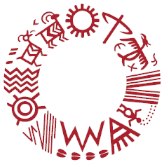August 7, 2024
Wildfires are a growing concern in forestry management, posing significant threats to both the environment and surrounding communities. This is why A.E.W. LP specializes in post-wildfire hydrology assessments, focusing on understanding the critical hydrologic impacts of wildfires and salvage logging. Our innovative approach leverages hydrological modeling, site visits, and desktop analysis to provide actionable insights and recommendations aimed at assessing risks, thus reducing their impact or likelihood through mitigation strategies.
The Importance of Understanding Hydrologic Impacts
Wildfires drastically alter landscapes, changing the flow quantity, and in some cases the change is significant. These changes can lead to increased erosion risks, geomorphological alterations, and potential flooding. Understanding these hydrologic impacts is crucial for developing effective mitigation strategies and ensuring the resilience of affected landscapes. Salvage logging, while necessary for removing burned timber and reducing future fire risks, can further complicate hydrologic dynamics, making thorough assessments even more vital.
The Hydrological Modeling Process
Hydrological modeling is central to A.E.W. LP’s post-wildfire assessments. This technique involves simulating the water flows pre and post wildfire to analyze changes in water flow quantity. Developing pre and post hydrologic modeling parameters give us the opportunity to predict flow in the future and compare pre and post wildfire flow discharge.
By inputting various data sets, such as precipitation, temperature, evapotranspiration, watershed properties represent as hydrologic parameters into our models, we can predict pre- and post -wildfire flow discharges. After calibrating and validating the model, it can be used to predict future discharge flow. This predictive capability allows us to be aware of high-risk locations for both flood and erosion.
Desktop Analysis and Site Visits
With desktop analysis A.E.W. LP can process vast amounts of data, such as satellite imagery and historical records, collected by Environment Cananda, to gain a deeper understanding of the landscape’s pre- and post-fire conditions.
To decrease uncertainties, A.E.W. LP combines on-the-ground site visits with desktop analysis. During site visits, our experts observe firsthand the conditions of the affected areas. This ground-truthing process is essential for spotting the hidden issues; decreasing the uncertainty of digital data, which may not be recent or accurate. Together, these methods enable us to make well-informed recommendations tailored to each unique situation.
Flood Risk Analysis and Mitigation
One of the key components of our assessments is flood risk analysis modeling. Post-wildfire landscapes are particularly susceptible to flooding due to the loss of vegetation and changes in soil properties. By simulating various flood scenarios, we can pinpoint high-risk areas giving valuable insights to surrounding communities. Our goal is to reduce the likelihood of catastrophic flooding and its associated impacts on both the environment and surrounding communities.
Community Values and Resilience
At A.E.W. LP we recognize that the impacts of wildfires extend beyond the environment. They also affect the social and economic fabric of communities. Our assessments therefore consider community values, ensuring that our recommendations not only address environmental resilience but also support the well-being of local populations. By identifying and protecting community assets, such as water resources, infrastructure, and recreational areas, we contribute to the overall recovery and resilience of affected regions.
Conclusion
The hydrologic impacts of wildfires are complex and far-reaching, necessitating thorough and accurate assessments to develop effective mitigation strategies. A.E.W. LP’s post-wildfire hydrology assessments leverage advanced hydrological modeling, and a strong consideration of community values to support the recovery and resilience of affected landscapes. Our expertise in identifying high-risk areas and recommending targeted solutions has proven invaluable in successful assessments, underscoring the importance of our work in forestry management and environmental science.
If your land or community has been impacted by the wildfires and are looking to enhance your understanding of post-wildfire hydrology, A.E.W. LP offers a trusted and proven approach. By partnering with us, you can ensure that the hydrologic effects of wildfires are thoroughly understood and managed, making way for a more resilient, healthy and sustainable landscape.

